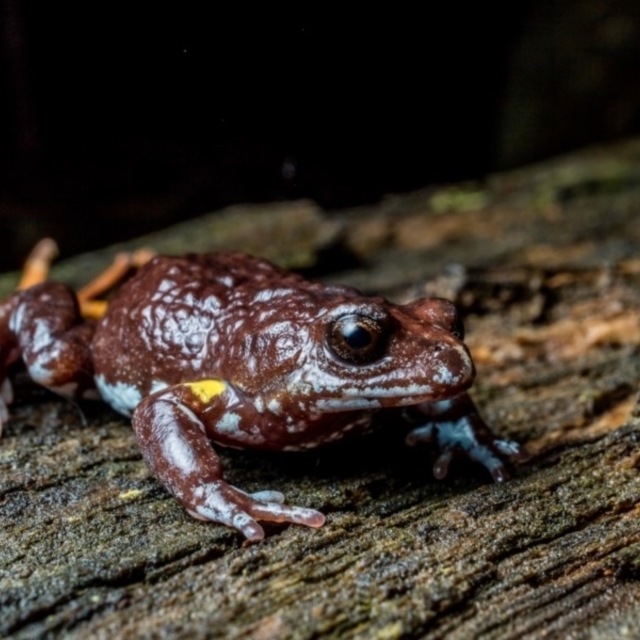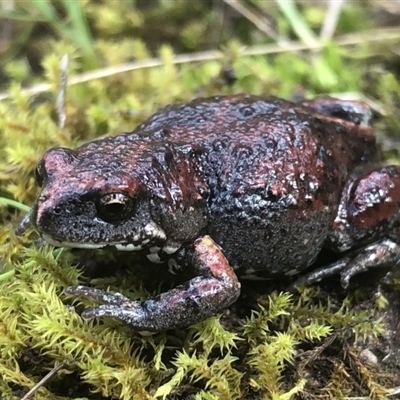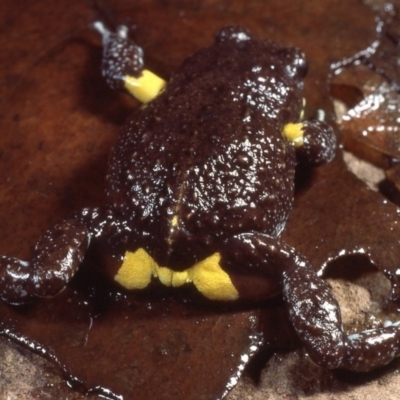Pseudophryne bibronii (Brown Toadlet)
<p><strong>Current conservation status:</strong> Rare, an insufficiently known species. Anecdotal and survey evidence indicates widespread decline since 1980s. Its taxonomic status is uncertain.</p> <p><strong>Family:</strong> Myobatrachidae</p> <p><strong>Appearance: </strong>Small terrestrial frog. Dorsal colour varies from brown to light or dark grey, typically with darker flecks and sometimes orange capped warts. The back is typically covered in low warts. There is often a bright yellow or orange patch on the vent and base of the arms. The belly is smooth or slightly granular, and is marked with bold black and white mottling. The toes lack webbing and the frog typically crawls rather than hops.</p> <p><strong>Length: </strong>25 - 33mm</p> <p><strong>Breeding:</strong> Late summer to early winter, February to June. Breeding habitat is in ephemeral pools and seepage lines that are typically dry during the breeding season.</p> <p><strong>Habitat:</strong> Dams and large ponds, small ponds and puddles, soaks and seepage lines, in forests, heathlands and grasslands- often in areas that have been highly modified.</p> <p><strong>Distribution: </strong> Occurs accross much of south-eastern Australia except for costal areas south of Jarvis Bay, where it gets replaced by the Southern Toadlet. In our region it occurs in the plains north and west of Canberra and in the Tumut district. It previously occured in bushland in suburban Canberra but has seemingly disappeared. It is now only known from a few scattered sites in the foothills south-west of Canberra.</p> <p><strong>Biology:</strong> Males call from terrestrial nests in vegetation and soil in areas that will flood following significant rain events. Eggs are deposited in these terrestrial nests, develop through to hatching stage, and then wait for the flooding, which stimulates the eggs to hatch and the tadpoles to move into the main pool.</p> <p><strong>Call</strong>: Short, rapid, grating sound "cr-ek".</p>,<p>Current conservation status: Rare, an insufficiently known species. Anecdotal and survey evidence indicates widespread decline since 1980s. Its taxonomic status is uncertain.</p> <p>Distribution: In ACT scattered locations usually below 800m.</p>
Pseudophryne bibronii is listed in the following regions:
Canberra & Southern Tablelands | Albury, Wodonga | South Coast
Species information
- Pseudophryne bibronii Scientific name
- Brown Toadlet Common name
- Not Sensitive
- Rare or uncommon native
- Non-invasive or negligible
- Up to 1130m Recorded at altitude
- Machine learning
- External link More information






















